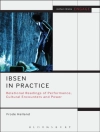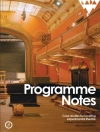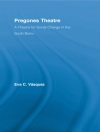Excelsior, an extraordinary spectacular ballet in 6 parts and 11 scenes by Luigi Manzotti, with music by Romualdo Marenco, was premiered on 11 January 1881 at La Scala Milan. This unique and remarkable allegorical work depicts the rise of human civilization, and the stormy progress of technical development. This scenario is envisioned as an embittered struggle between the Spirits of Light and Darkness, and their more human personifications as Civilization (or Progress) and Obscurantism. The invention of the steam ship, the iron bridge, electricity, telegraphy, the building of the Suez Canal and the Mont Cenis Tunnel see the Spirit of Darkness admitting defeat. A Grand Festival of the nations of the world in harmony is celebrated with an apotheosis of light and peace.The ballet enjoyed immense popularity and was constantly revived all over Europe. After its Vienna premiere in 1885, it remained in the repertory for 29 years, receiving 329 performances. Modern revivals have been by Ugo dell’Ara for the Maggio Musicale Fiorentino in 1967, at La Scala di Milano in 1974, the Spoleto Festival of Two Worlds in 1990, and at the Teatro Degli Arcimboldi Milano in 2002.Sport premiered at La Scala, Milan on 10 February 1897. This was the third and last of Manzotti’s grand positivist trilogy which started with, and found its apotheosis in, Excelsior. As modern and spectacular as the other two, Sport was intended as a celebration of every kind of athletic activity, especially in the enthusiastic aftermath of the first modern Olympic Games in Athens on 11 April 1896. Although the scenario concerned the eternal triangle, it was only an excuse for displays of skill by soloists and stupendous ensembles for the corps de ballet, whose costumes were very daring for that period. Sport has been seen as the ancestor of the precision manoeuvres of the Hoffmann Girls, and even as an influence on Fokine’s geometric groupings and on the styles of Golejzovsky, Nijinska, Balanchine and Lifar. The popularity of the work was enormous (46 performances in the first season), and was equally successful when revived in 1905 and 1906 under the direction of Achille Copini.Romualdo Marenco (1841-1907) was involved with music from an early age, and began his professional life as violinist and second bassoonist at the Teatro Andea Doria in Genoa. His career as a composer was also launched at this theatre with the music for the ballet Lo sbarco di Garibaldi a Marsala. For a while he became principal violinist in various orchestras before being appointed deputy concert leader and director of ballet music at La Scala Milan, a position he held for seven seasons. Marenco worked with dance masters like Ferdinando and Giovanni Pratesi. But most significantly it was during this period that he met the famous choreographer Luigi Manzotti. He began a musical collaboration with Manzotti that was to bring them both great fame.Luigi Manzotti (1835-1905) was very successful in Rome as a mime artist, and choreographed his first ballet in 1858 (Le Morte di Masaniello). Even in his early works his special gifts for spectacular effects became apparent, as in Cleopatra and Pietro Micca. He went to Milan in 1872, where he found his true metier in collaboration with Romualdo Marenco. Manzotti surpassed his Roman successes, first with Sieba, ossia La spada di Wodan (Turin 1878), but most famously with the positivist trilogy Excelsior (Milan 1881), Amor (Milan 1886) and Sport (Milan 1897).Manzotti was the master of the ballo grande which used historical and allegorical subjects treated with great seriousness for their deeper social and symbolic significance, and employing huge casts and elaborate mise en scene to create an overwhelming spectacle. His ballets were devised as a series of related episodes expressed in mime with simple but effectively devised large ensembles by dancers, and processions with trained supernumeraries.Marenco’s music has been dismissed as a medley of polkas and military band music, yet it was spread all over the world by the success of Excelsior: always carefully moulded to the choreographic action, it is well-written, with melodic verve, formal invention, and an overwhelming sense of rhythmic dynamism. The music is fast-moving and vivacious, rarely sentimental, and often induces a torrential sense of exhilaration.The enduring success of Excelsior, the only full-length Italian ballet to survive from the 19th century, is a tribute to Manzotti’s artistic vision and Marenco’s musical imagination.
Robert Ignatius Letellier
Romualdo Marenco [PDF ebook]
Excelsior and Sport
Romualdo Marenco [PDF ebook]
Excelsior and Sport
Beli ebook ini dan dapatkan 1 lagi GRATIS!
Format PDF ● Halaman 340 ● ISBN 9781443867269 ● Penerbit Cambridge Scholars Publishing ● Diterbitkan 2014 ● Diunduh 3 kali ● Mata uang EUR ● ID 3397485 ● Perlindungan salinan Adobe DRM
Membutuhkan pembaca ebook yang mampu DRM












